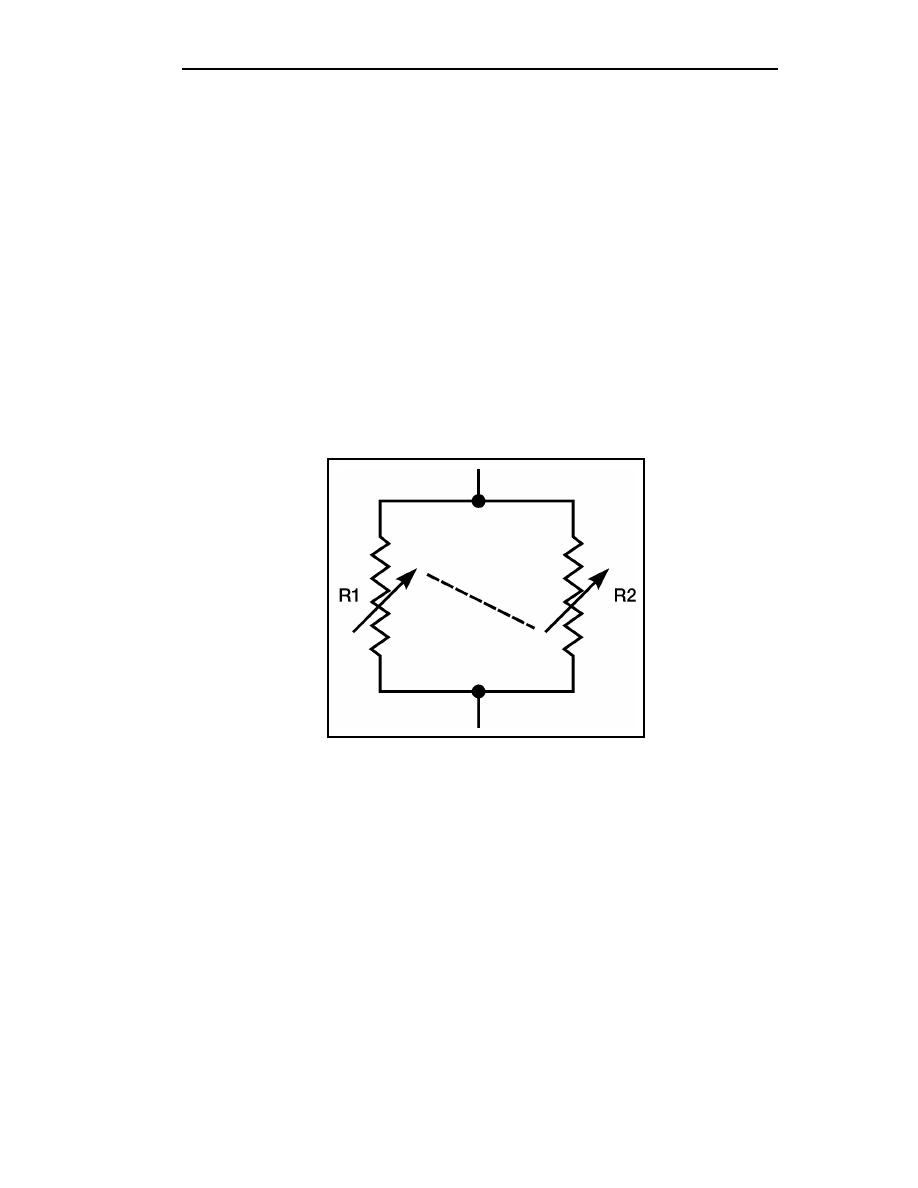
TC 9-62
response could be either maximum or minimum impedance. As you have seen, the
frequency-determining network needed for an RF amplifier should have maximum
impedance at the desired frequency.
6-49. Review Figure 6-12 before you look at the actual components that make up the
frequency-determining network for an RF amplifier. Figure 6-12 is a simple parallel
circuit. The resistors in this circuit are variable and are connected together (ganged) in such
a way that as the resistance of R1 increases, the resistance of R2 decreases, and vice versa.
6-50. If each resistor has a range from 0 to 200 ohms, the following relationship will
exist between the individual resistances and the resistance of the network (RT), see
Table 6-1. All values are in ohms, RT rounded off to two decimal places. These are selected
values; there are an infinite number of possible combinations.
resistors are of equal value. If the variable resistors represented impedances and if
components could be found that varied their impedance in the same way as the ganged
resistors in Figure 6-12, you would have the frequency-determining network needed for an
RF amplifier.
Figure 6-12. Parallel Variable Resistors (Ganged)
6-14
TC 9-62
23 June 2005


 Previous Page
Previous Page
